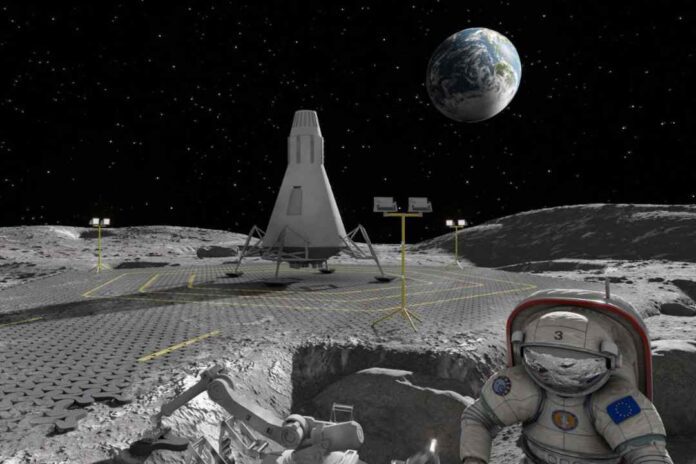A new study in Scientific Reports shows that it may be feasible to build roads and landing pads on the Moon by using lasers to fuse lunar dust into a harder, layered material.
The researchers used a lunar dust substitute called EAC-1A (created by ESA) and melted it with a carbon dioxide laser on Earth to mimic how solar radiation can solidify lunar dust on the Moon. The results indicate that this technique could work on the moon as well, but it may require some further improvements.
Lunar dust is a big problem for rovers on the Moon, as it can float in the air when disturbed by the low gravity and damage the equipment. Therefore, having roads and landing pads on the Moon would help reduce dust issues and improve transportation.
However, bringing construction materials from Earth is very expensive, so it would be better to use what is available on the Moon. The authors of the study, Ginés-Palomares, Miranda Fateri, and Jens Günster, tested different laser settings (up to 12 kilowatts and 100 millimetres wide) to melt the EAC-1A material and make it stronger.
They found that crossing or overlapping the laser paths caused cracks in the material. They came up with a method using a 45-millimeter-wide laser to make triangular shapes with hollow centres that were about 250 millimetres big.
These shapes could be fitted together to form a solid surface over large areas of lunar soil that could be used as roads and landing pads.
To apply this method to the Moon, the researchers estimate that a lens of about 2.37 square metres would have to be brought from Earth to act as a solar concentrator instead of the laser. The small size of the equipment would be an advantage for future Moon missions.
Reference:
Ginés-Palomares, JC., Fateri, M., Kalhöfer, E. et al. Laser melting manufacturing of large elements of lunar regolith simulant for paving on the Moon. Sci Rep 13, 15593 (2023). DOI: 10.1038/s41598-023-42008-1
